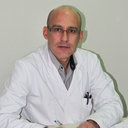The diagnostic performance of (99m)Tc-HMPAO radiolabeled leucocytes scintigraphy in the investigations of infection. A single center experience.
Keywords
Abstract
OBJECTIVE
This study aims to evaluate the diagnostic efficacy of (99m)Tc-HMPAO-labeled white blood cells scintigraphy (RL-WBC scan) in a variety of infectious processes. Despite the technical difficulties of labeling WBCs without altering their viability/pathophysiologic integrity and the lengthy imaging procedure, the RL-WBC scan has gained an evolving role in the detection of occult infection.
METHODS
Retrospective review of 66 patient files (34 males and 32 females) that underwent this functional imaging test from September 2013 until September 2015. Their mean age was 58.39±18.63 (range: 11-84) years. Twenty seven of them were investigated for fever of unknown origin, 6 with suspicion of inflammatory bowel disease, 9 with aneurysm of celiac artery before or after abdominal endovascular aortic repair, 6 with joint prostheses, 5 with diabetic angiopathy, and 13 had rather undefined symptoms.
RESULTS
The mean labeling yield of the leukocytes with the lipophilic complex (99m)Tc-HMPAO was 57.4±8.6. The RL-WBC scan was positive in 39/66 patients, including 16/27 patients with fever of unknown origin and 8/9 patients with aortic aneurysm/graft infection. It showed expected/suspected localization of radioactivity in 23 patients, whereas 11 of them had equivocal signs of infection. In 16 patients, a significant change in patients' management was conferred, as non-suspected locations of inflammatory process were detected, based on early functional alterations derived from leukocyte recruitment.
CONCLUSIONS
The RL-WBC scan (i) is extremely useful in the diagnosis of perigraft tissue infection and osteomyelitis (except for spine) with high rate of sensitivity and specificity (≈90%) when timely used, and (ii) may provide valuable information in patients with fever of unknown origin, inflammatory bowel disease or vague symptoms. False positive results have been noticed mainly due to artifacts, co-existent skeletal lesions or in the early postoperative course because of the nonspecific radionuclide uptake in the healing tissue. On the other hand, false negative results may appear in delayed aortic graft infection, etc. Difficulties arise in the discrimination between infection and sterile inflammatory lesions accompanying atheromatosis or grafts/prostheses. Our experience shows that there should take place a closer co-operation between nuclear medicine physicians and clinicians to ensure the rational selection of the patients that would benefit from this complex diagnostic procedure, in order to get the optimal results concerning in vivo inflammation/abscess visualization.




